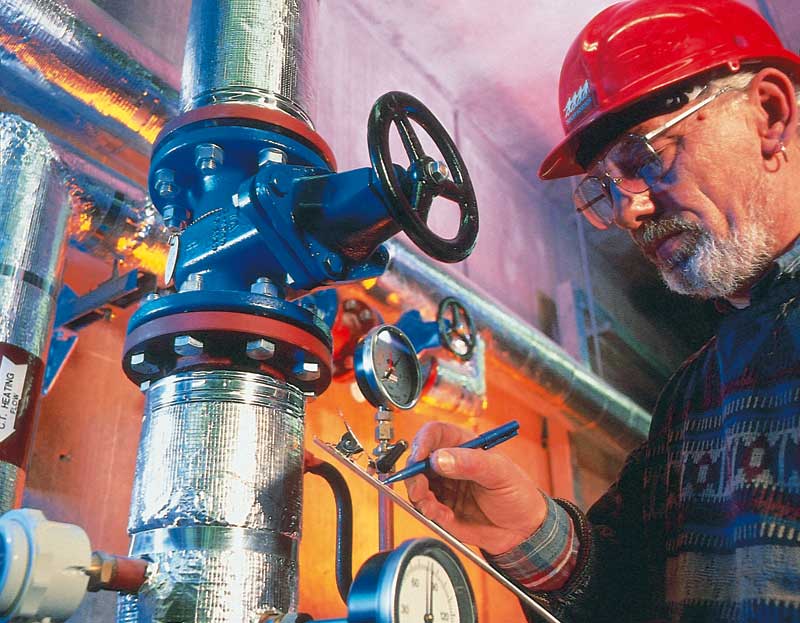The cost of discomfort in the healing environment.
 Other News
Other News Subscribe to newsletter
Subscribe to newsletter
| 28 Jul 2010 |
A welcoming and comfortable atmosphere in healthcare institutions is key to a healing environment. Interior climate is a big part of this but the technology behind it is often unbeknownst to staff. Bassam Al-Awar, General Manager of Tour & Andersson, discusses how hydronic balancing in waterborne heating and cooling systems can help regulate indoor climate in a hospital, at the same time as saving energy and CO2 for Facility Managers, building managers and owners.
Hydronic Balancing is the term used to describe the process of troubleshooting applied to a waterborne heating and cooling system that is properly regulated by valves to meet the specific needs of a building’s occupants. In the system, internal pipework carries a constant supply of temperature-specific water around the system, heating each room connected to the HVAC network.
Ensuring that a system operates to its design optimum is key in any application. For hospitals slight changes in temperature can have dramatic implications, particularly for surgery or operating areas where highly technical machinery is operated and fluctuations of less than one degree need to be monitored.
All too often staff using a building are unaware of the technology behind the system, altering the thermostat according to their own comfort needs. This forces the boiler or the chillers system and pump to work harder, with energy wasted in the process of heating or cooling a building, with many parts not receiving the desired climatic temperature set for the area.
Water will always find the quickest route through a system, so for example in unbalanced waterborne systems, water will find shortcuts throughout the circuit resulting in an unregulated flow and causing fluctuations in temperature. As a result, rooms not connected to circuits favoured by the unusual flow do not receive the set temperature until much later in the day, or in many cases, not at all. Again the thermostat is altered in response to this and the ‘cost of discomfort’ quickly adds up.
In many cases, the failure to provide a well maintained and properly balanced and controlled heating and cooling system falls down to available budgets. Healthcare managers are increasingly faced with the dilemma of reducing their spend. However, in the long run, a poorly managed system can prove to be far more costly due to an increased risk of service breakdowns and the need for repair.

Statistically, two out of three buildings experience problems with indoor climate technology. To try and counteract this problem and the associated cost of staff complaints, more components are often added to regulate an already faulty system, which can prove to be costly both in terms of financial and energy consumption, as more energy is used to power the additional parts, resulting in higher energy costs and increased carbon emissions.
To help resolve the problem, pro-active troubleshooting, known as Total Hydronic Balancing, is recommended. This is a set of specific procedures in which waterborne heating and cooling systems are made controllable and operate in the way in which they were originally designed to. This eradicates the need to turn thermostats up and down, which can put added strain on boilers, resulting in increased energy consumption, and rise in unnecessary carbon emissions.
By installing a carefully monitored hydronically balanced system, it is possible to not only reduce long term costs, recognised as a key consideration for hospital managers, but also help reduce the building’s energy output, an area that many site FMs, especially those within the public sector, must pay special attention to when considering the importance of legislative compliance and Display Energy Certificates.
The healthcare sector, among other Public Sectors in the UAE, has a set of mandatory targets, which aims to reduce energy consumption, both in new and existing buildings. Of this, HVAC technology and cooling systems as a whole, represent 50 to 60% of a building’s total energy output.
In turn, the investment in hydronic balancing accounts for only 2% of the total HVAC technology system costs, and a properly balanced system can cut energy consumption by up to 40%. Consultation with a hydronic balancing expert can address these targets and make a positive contribution to the cost of compliance too.
When considering the heating needs of a healthcare building, early technical input offers a tailored approach to each specific site. Hydronic balancing greatly minimises the risk of problems occurring down the line, making it a more attractive option in terms of cost and time savings, which are a matter of priority to FMs, healthcare managers and building owners.




